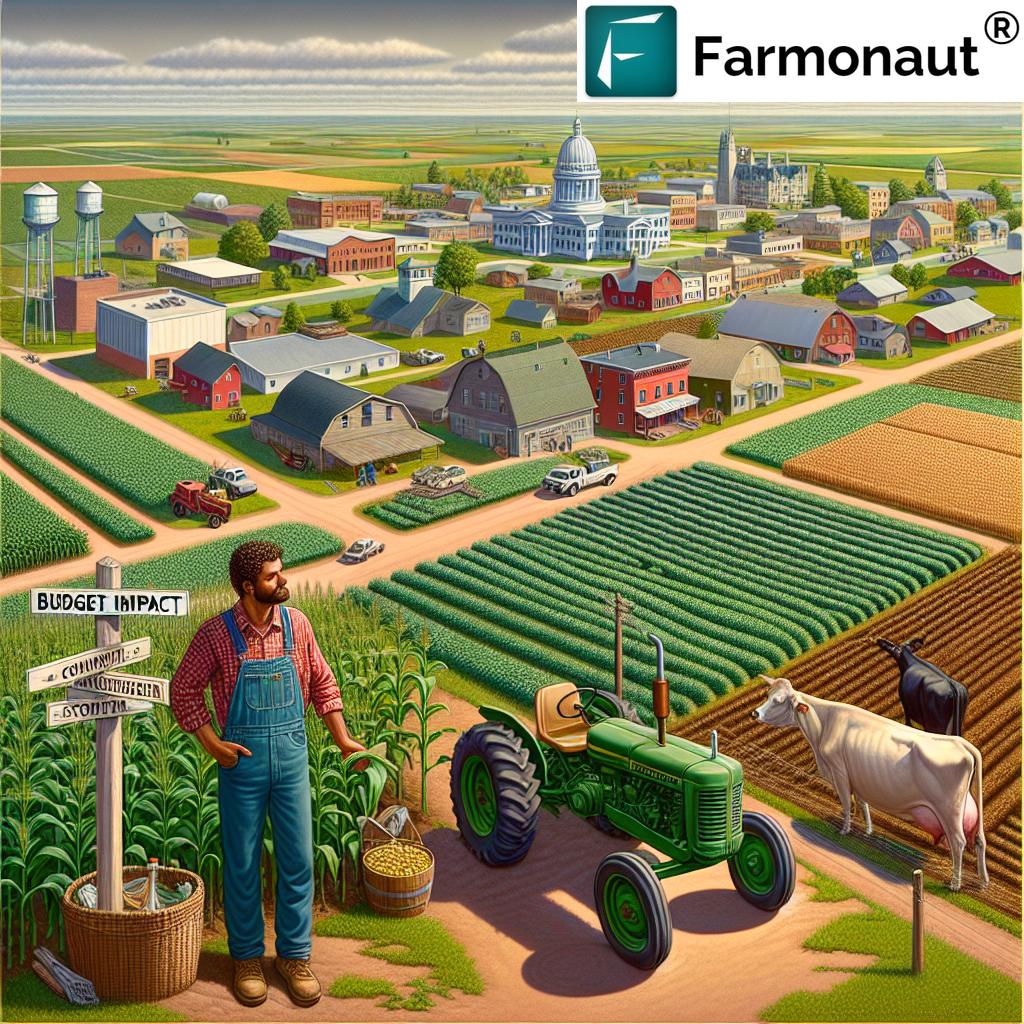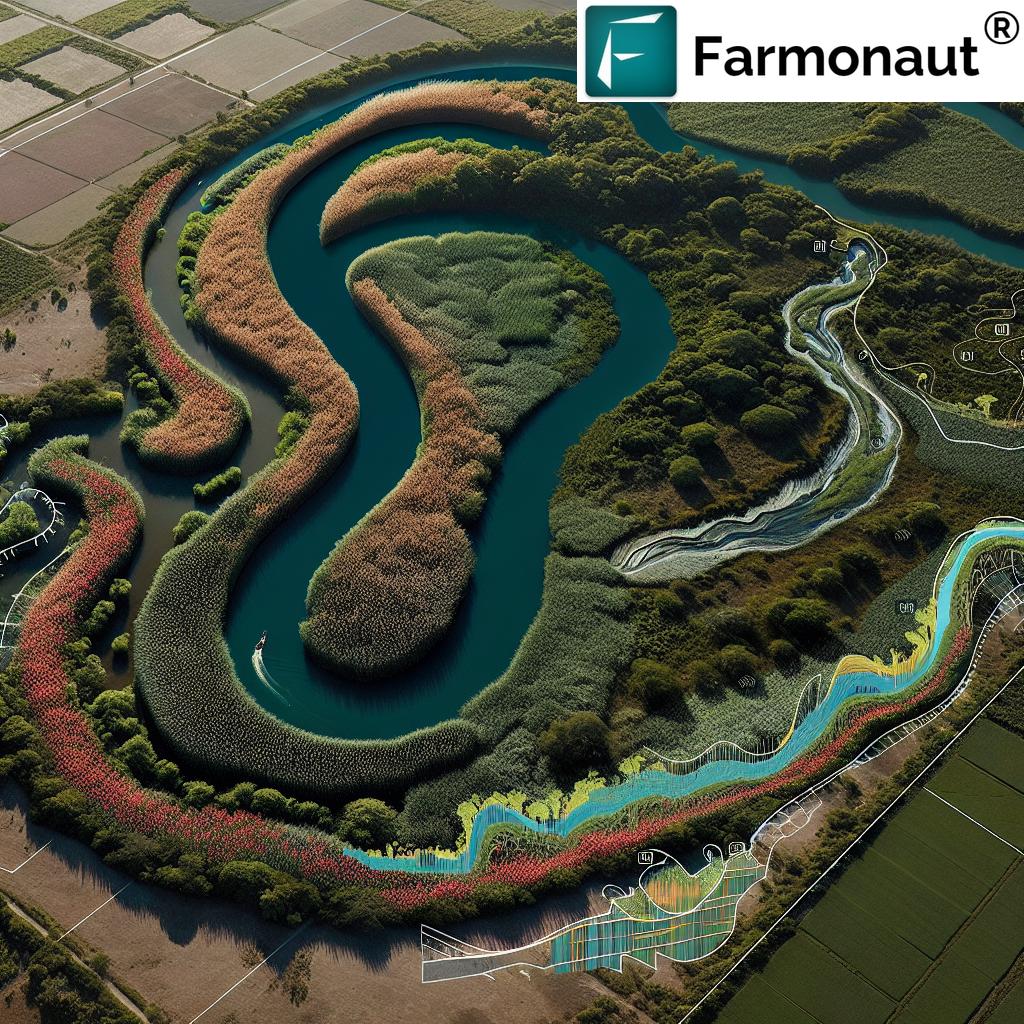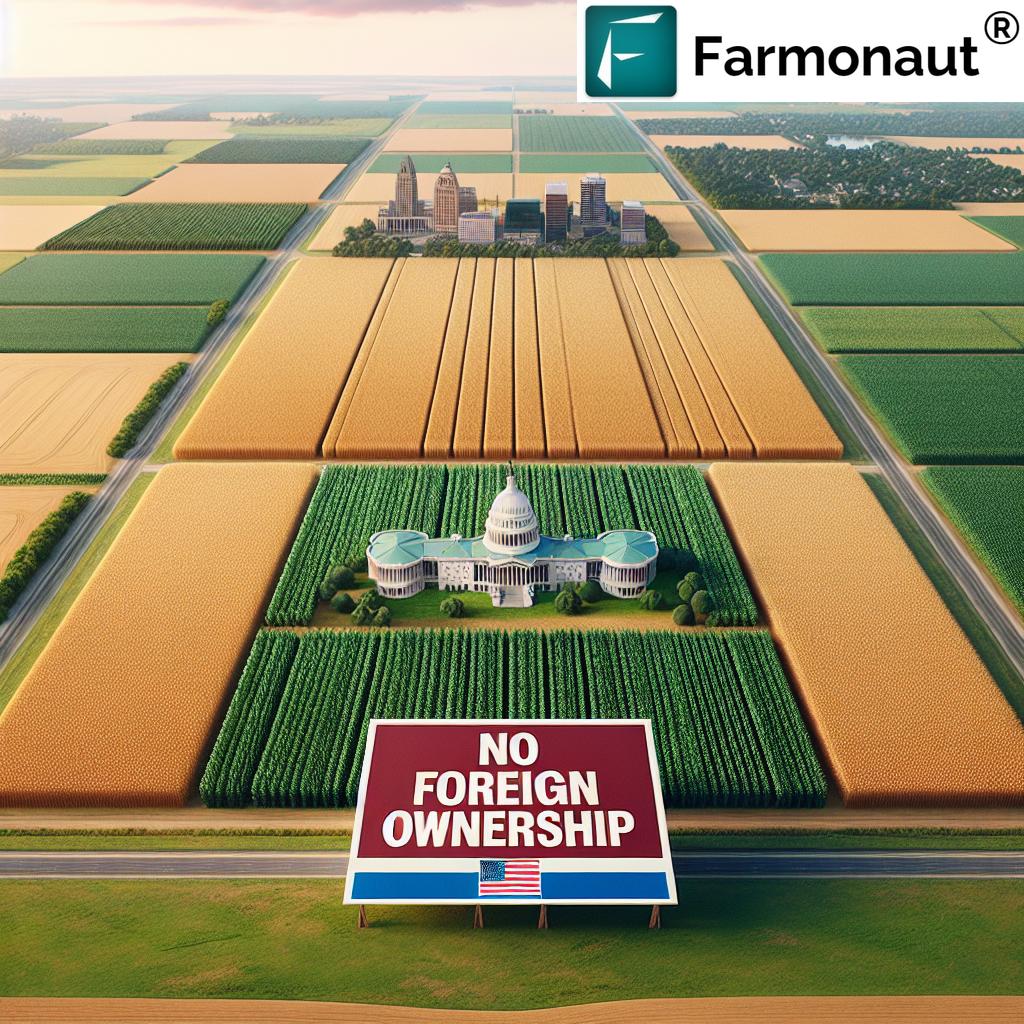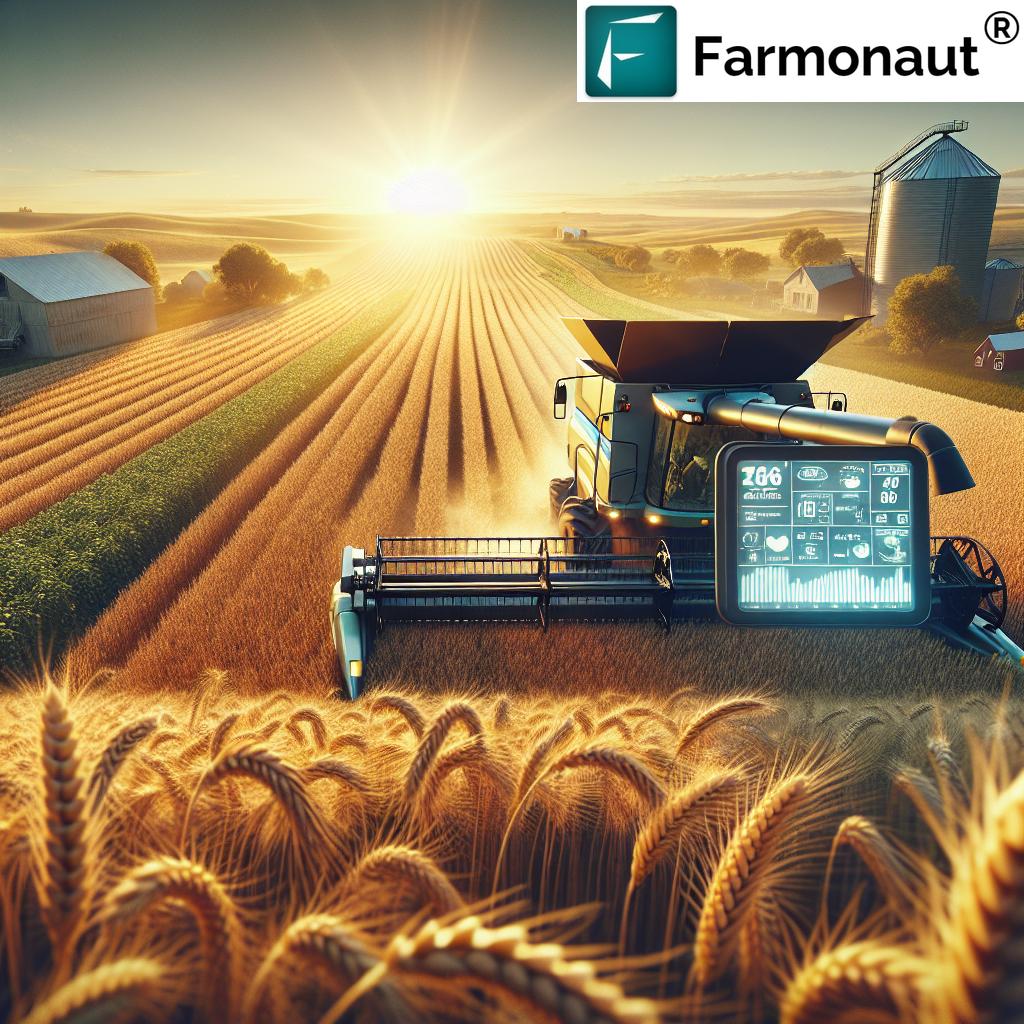Farmland in Illinois: 2025 Top Trends & Opportunities
Meta Description: Illinois farmland for sale: Explore 2025 market trends, crop yields, soil quality, and sustainable practices shaping new investment opportunities in Illinois agriculture.
“Illinois farmland prices rose 8% in 2024, marking the highest annual increase in the Midwest region.”
Overview: Illinois Farmland for Sale in 2025
Illinois has cemented its position as one of America’s premier agricultural states, thanks to its fertile soil, favorable climate, and extensive transportation infrastructure supporting large-scale farming operations. As economic, technological, and environmental shifts reshape the nation’s agricultural landscape, farmland for sale in Illinois is drawing strong demand from both established farmers and a growing wave of new investors eager to capitalize on the state’s highly productive acreage.
Whether you’re considering an acquisition in central Illinois farmland for sale or exploring opportunities in northern or southern regions, understanding the 2025 landscape—including market trends, crop yields, soil quality, and sustainable practices—is essential for making informed, strategic investment decisions.
The Appeal of Illinois Farmland: What Makes It Stand Out?
Farmland in Illinois is widely regarded for its rich, productive mollisol soils. These are among the most fertile soils in the world, enabling staple crops such as corn and soybeans to dominate the state’s agricultural output. Central Illinois, especially, offers some of the best farmland in the nation due to its flat terrain, advanced irrigation systems, and access to major transportation networks for moving grain efficiently to market.
The appeal of farmland for sale in Illinois now extends even further, driven by several key factors:
- Highly productive soils: Mollisols are prized among buyers and investors for their unmatched productivity, especially in central Illinois where yields frequently exceed national averages.
- Ideal climate & reliable rainfall: Conditions support consistent crop production and minimize risk due to drought or extreme weather.
- Strong transportation infrastructure: Access to rail, barge, and interstate networks enables efficient operation and supply chain integration.
- Sustainable practices: Growing numbers of operators are implementing cover cropping, reduced tillage, and high-efficiency irrigation for greater resilience and soil health.
- Robust local and global demand: As food systems become more interconnected, Illinois’s central location powers access to major commodity markets.
These unique advantages ensure that Illinois farmland remains a top choice for buyers and investors entering the 2025 market.
Illinois Farmland Market Trends in 2025
The 2025 Illinois farmland market is shaped by strong demand, high prices, a growing focus on sustainability, and technological advancements. Let’s explore the most defining trends:
Robust Demand and Price Appreciation
The market remains robust, with prices for farmland in Illinois showing a steady appreciation. This rapid growth is driven by:
- High commodity prices: Grain and oilseed prices have rebounded, raising land values and investment returns.
- Low interest rates: Continued low rates create favorable borrowing conditions for both buyers and investors.
- Institutional capital: Farmland REITs and private equity funds are increasing their presence, particularly in central Illinois farmland for sale markets where yield potential is highest.
- Limited supply: Long-term owners are holding onto productive farmland, keeping available parcels at a premium.
The average price per acre fluctuates by county, soil quality, and accessibility, but central Illinois locations typically command premium prices—often between $12,000 and $20,000 per acre for top parcels in 2025.
“Over 60% of Illinois farmland sales in 2025 feature sustainable practices, reflecting a major industry shift.”
Rise of Sustainable and Precision Agriculture in Farmland Illinois
Sustainable farming practices now dominate new sales, as both operators and investors seek to reduce risk, protect soil health, and access premium markets. This includes:
- Adoption of cover cropping and reduced tillage
- Integration of high-efficiency irrigation systems
- Data-driven, precision agriculture technologies that optimize soil and crop health while minimizing environmental impact
The use of carbon footprint tracking and qualifying for conservation programs are increasingly important, as buyers look to add revenue streams from sustainability-linked incentives and carbon credits.
Farmonaut’s carbon footprinting service (learn more) enables farms to monitor, report, and actively reduce their environmental impact, which can significantly increase land value and compliance with future regulations.
Focus on Diversification and Resilience
The era of single-crop, monoculture farms is fading. Illinois farmland owners and operators are pursuing diversified portfolios to hedge against market risks and environmental variability. In 2025, we’re seeing:
- Growing market share for organic and specialty crops, from non-GMO soybeans to vegetables, pulses, and niche grains
- Expanded implementation of agroforestry, integrating trees with crops and/or grazing for additional income and ecosystem services
- Experimentation with cover crop seed production and on-farm composting businesses
Enhanced Market Access & Growth in Land Leasing
The infrastructure for crop transport remains a major draw: rail lines, river ports, and highways reinforce Illinois farmland’s connectivity to global commodity markets.
Optimized land leasing models are also on the rise, as investors acquire farmland for sale-leaseback or collective ownership, while operators seek to expand production efficiently in a climate-smart way.
Key Considerations for Buying Farmland in Illinois
Prospective buyers of Illinois farmland for sale should conduct rigorous due diligence before closing any transaction in 2025. Here are the essential factors influencing value and investment outcome:
- Location:
- Central Illinois farmland—top-tier for consistent yields, infrastructure access, and premium tenant demand.
- Northern and southern regions—offer lower prices and sometimes more diverse cropping or recreational opportunities.
- Soil Quality:
- Always consult the USDA’s NRCS soil surveys to assess soil class, productivity index, and overall yield potential.
- Zoning & Land Use:
- Check local zoning for limitations on agricultural activities, on-site storage, or future rural development; review for conservation easements.
- Water Access & Irrigation:
- Ensure all wells, irrigation rights, or access to water districts are secure for operational flexibility—especially crucial in years with variable rainfall.
- Parcel Size & Accessibility:
- Larger, contiguous parcels support higher mechanization and efficiency, while accessibility to main roads and grain elevators adds value.
- History of Sustainable Practices:
- Land with a proven track record of precision agriculture and active sustainability initiatives often commands a price premium for future buyers.
Crop Yields, Soil Quality & Sustainable Practices Shaping Illinois Farmland
Illinois farmland produces the nation’s second-highest corn and soybean output, championed by world-class soils and modern farming operations.
Typical Yields & Soil Types
- Central Illinois: Corn: 220-240 bushels/acre, Soybeans: 65-75 bushels/acre on high-quality Mollisols
- Northern Illinois: Slightly lower yields, close to 200 bushels corn and 60 bushels soybeans/acre; mix of Mollisols and Alfisols
- Southern Illinois: More variable yields (170-200 bushels corn, 50-60 soybeans) due to mixed soils (Mollisols, Ultisols), rainfall, and terrain
Sustainable Practices: 2025 Standards
- Cover cropping improves organic matter, enhances water retention, and reduces erosion.
- No-till/strip-till systems maintain soil structure and reduce fuel costs.
- Precision nutrient management via soil sensors and digital records—now required by many buyers to ensure long-term productivity.
- Carbon tracking and emission reporting gain momentum, with platforms like Farmonaut’s carbon footprinting modules allowing real-time monitoring and compliance.
Diversification & New Investment Opportunities in Illinois Farmland
As 2025 approaches, Illinois farmland for sale is increasingly promoted not just for commodity crop production but for its capacity to support multiple streams of value:
- Organic Conversion: Farms with proven organic or transitioning acreage attract premium buyers, especially near growing metro demand centers.
- Specialty Crops: Pulses, hemp, non-GMO grains, and horticultural crops find market niches and insulation from commodity price swings.
- Recreation & Agri-Tourism: Parcels with forest cover, water features, or proximity to major cities command higher prices for hunting, fishing, and rural escapes.
- Carbon Markets & Environmental Services: Integrating carbon monitoring and credits into farm operations creates new income and attracts environmentally conscious buyers.
- Digital Monitoring & Tech-Enabled Operations: Digitally managed, satellite-monitored farms are in high demand from both domestic and institutional investors.
At Farmonaut, we provide advanced satellite-based farm management and real-time crop health monitoring solutions, available via app and API integration. Our platform supports landowners, operators, and agri-investors in Illinois and across the Midwest by enhancing data-driven decision making, improving yields, and reducing operational costs.
Developers and agribusinesses, looking to build their own digital tools, can also leverage Farmonaut API access—see API Information and Developer Docs for details.
Farmland Trends & Investment Opportunities Comparison Table
The following table provides an at-a-glance comparison of Illinois farmland regions—essential for buyers, investors, and stakeholders seeking to assess 2025 market trends, yield potential, and sustainability across key counties.
| Region / County | Avg. Price per Acre (2025 est.) | Predominant Crop Types | Average Yield per Acre (2025 est.) | Soil Quality Index (est.) | Adoption of Sustainable Practices (%) | 2024 vs 2025 Trend |
|---|---|---|---|---|---|---|
| McLean (Central Illinois) | $17,500 | Corn, Soybeans | Corn: 235 bu/acre, Soy: 75 bu/acre | 95 (Excellent) | 75% | ↑ +8% price; +7% sustain. adoption |
| Champaign (Central) | $16,250 | Corn, Soybeans, Wheat | Corn: 230, Soy: 72 | 93 (High) | 72% | ↑ +7.5% price; +6% sustain. adoption |
| DeKalb (Northern) | $14,700 | Corn, Soybeans | Corn: 205, Soy: 65 | 90 (High) | 68% | ↑ +7% price; +8% sustain. adoption |
| Adams (Western) | $12,400 | Corn, Soybeans, Wheat | Corn: 200, Soy: 60 | 83 (Good) | 63% | ↑ +6% price; +6% sustain. adoption |
| Sangamon (Central) | $15,500 | Corn, Soybeans | Corn: 211, Soy: 67 | 91 (High) | 71% | ↑ +7.2% price; +7% sustain. adoption |
| Saline (Southern) | $8,600 | Corn, Soybeans, Wheat, Hay | Corn: 175, Soy: 53 | 75 (Moderate) | 54% | ↑ +4.2% price; +9% sustain. adoption |
| Other IL Counties (Avg.) | $10,500 | Corn, Soybeans, Forage | Corn: 195, Soy: 58 | 80 (Moderate) | 60% | ↑ +4.5% price; +6% sustain. adoption |
Note: Yields, soil indices, and sustainability adoption rates based on estimated 2025 data. Premium locations in central Illinois command the highest prices per acre, while southern counties offer value opportunities and above-average sustainable practices growth.
Agroforestry & Forestry Opportunities in Illinois Farmland
While farmland illinois is primarily agricultural, parcels integrated with or bordering forested areas present agroforestry opportunities and added value for buyers.
- Agroforestry systems—windbreaks, buffer strips, alley cropping—diversify farm revenue and enhance land conservation.
- Recreational forests attract buyers interested in hunting, conservation, and carbon offset programs.
- Potential for Conservation Easements: Integrating forested acreage may allow for enrollment in conservation programs or carbon markets—see carbon tracking via Farmonaut for maximizing these benefits.
For those seeking expert advisory on integrating forestry practices or maximizing environmental value, access Farmonaut’s Crop Plantation and Forest Advisory tools.
2025 and Beyond: Illinois Farmland Outlook
Looking forward, the outlook for farmland in Illinois remains positive, underpinned by several reinforcing factors:
- Advances in precision agriculture and digital monitoring—more farms are leveraging satellite imagery, AI-based advisories, and digital recordkeeping for better yields and reduced input waste.
- Growing global demand for food, feed, and biofuels keeps commodity prices high and agricultural land an attractive hedge against inflation.
- Government sustainability programs provide revenue incentives for carbon sequestration, conservation, and biodiversity stewardship.
- Climate resilience is a priority, leading to robust investment in advanced irrigation and soil health strategies.
The 2025 Illinois farmland market will reward buyers who understand how to extract value through sustainability, data-driven agriculture, and versatile land use strategies.
How Farmonaut Empowers Farmland Illinois Stakeholders in 2025
At Farmonaut, we are committed to making precision agriculture and data-driven management accessible and affordable to everyone involved in the Illinois farmland ecosystem—from small-scale farmers to institutional investors.
- Real-Time Crop Health Monitoring: Our multispectral satellite imagery and NDVI analytics help maximize yields, optimize input costs, and identify crop stress early.
- Advanced Advisory Systems: Our Jeevn AI tool delivers tailored advice, weather data, and pest alerts for better farm management decisions.
- Blockchain Traceability: For those needing trust in product origin or sustainability claims, our blockchain-based traceability solutions provide end-to-end supply chain transparency—particularly valuable for organic and specialty crop markets.
- Resource & Fleet Management: Farmonaut’s fleet and resource management software reduces operational costs and increases efficiency for owners of multiple parcels or large equipment fleets.
- Financing Enablement: Via our satellite-based crop loan and insurance verification solutions, Illinois farmland owners and operators can secure loans and insurance faster and with less risk.
Our platform is available via Android, iOS, web apps, and APIs, delivering scalable and powerful decision-support tools for the Illinois farming community.
Illinois Farmland for Sale: FAQ 2025
Q: Why is central Illinois farmland for sale often priced higher than other regions?
A: Central Illinois farmland consistently offers the best soils (Mollisols), the highest average yields, and superior access to transportation infrastructure and major grain markets—making it highly attractive to buyers and investors.
Q: How do sustainable farming practices influence farmland prices in Illinois in 2025?
A: Sustainable practices (cover cropping, no-till, precision nutrient management, and carbon tracking) improve land health and resilience. Parcels demonstrating long-term adoption of these practices command a premium due to their increased productivity, reduced environmental risk, and eligibility for conservation payments or carbon markets.
Q: What technology trends should buyers consider when assessing Illinois farmland?
A: Farms leveraging satellite monitoring, digital recordkeeping, AI advisory tools, or integrated fleet/resource management software are future-ready. Such technology increases operational efficiency and can boost productivity, risk management, and investment confidence.
Q: What are typical financing and insurance options for farmland illinois buyers?
A: Buyers have access to dedicated agricultural lenders, government-backed loans, and specialized insurance. Modern platforms like Farmonaut’s Crop Loan and Insurance Verification streamline the verification process, speed up approvals, and help reduce risk for both borrowers and lenders.
Q: Does Illinois allow for agroforestry or conservation integrations within farm parcels?
A: Yes. Landowners can integrate forest cover, buffer strips, windbreaks, or wildlife habitat into farmland operations. This supports both conservation values and adds potential revenue through hunting, recreation, and emerging carbon markets (see Farmonaut’s advisory tools).
Q: How can technology help maximize yields and reduce costs on Illinois farmland?
A: Platforms like Farmonaut provide actionable data on crop health, soil moisture, and yield risks with satellite-based remote sensing. Our AI-powered advice and precision mapping improve efficiency and support both small & large-scale operations to optimize inputs and increase profits.
Conclusion: Illinois Farmland for Sale—Your 2025 Comprehensive Overview
Illinois remains at the center of the American agricultural economy, supported by fertile soils, favorable climate, advanced infrastructure, and a forward-thinking approach to sustainability. As we move into 2025 and beyond, Illinois farmland for sale stands as a compelling, versatile investment—whether you are seeking consistent commodity yields or diversified income streams via sustainable practices and agroforestry.
- Understanding location, soil quality, sustainable history, and technological readiness is central to making savvy investment decisions.
- Market trends point to continued appreciation, rising expectations for environmental stewardship, and expanding revenue channels from conservation and carbon programs.
- Technological tools are a new must-have, with data-driven, satellite and AI-based solutions ushering in smarter, more resilient farming for the next generation of American agriculture.
For Illinois farmland buyers, investors, and agribusinesses, the future is bright—and the opportunities vast. As always, remain committed to best practices, informed by real-time data, and positioned to shape the next era of sustainable agricultural excellence.
Farmonaut Subscription Plans for Agricultural Stakeholders
Ready to integrate satellite monitoring, crop advisory, and robust resource management into your Illinois farmland operations? Explore our flexible and affordable plans:
Copyright © 2025. All rights reserved.












